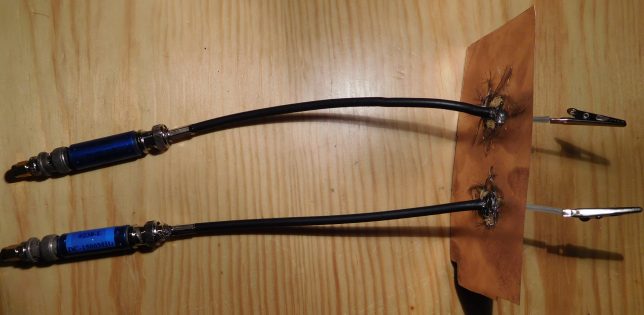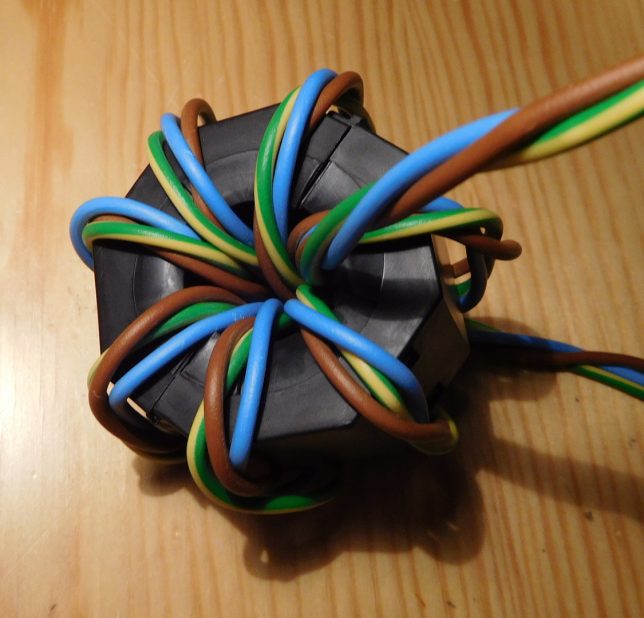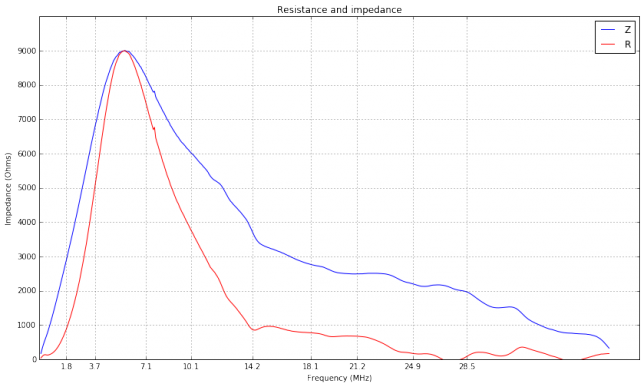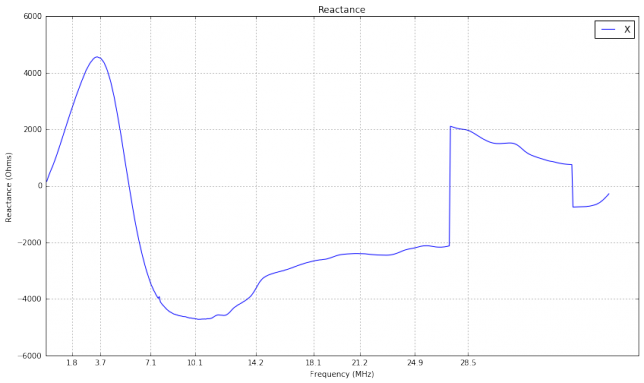I have made a mains choke for my HF station, following Ian GM3SEK’s design, which involves twisting the three mains wires together and passing as many turns as possible through a Fair-Rite 0431177081 snap-on ferrite core. I wanted to measure the choke’s impedance to get an idea of its performance, so I’ve used my Hermes-Lite 2.0 beta2 in VNA mode.
I am using the measurement method described by G3TXQ and Claudio IN3OTD. The choke is measured in transmission mode (\(S_{12}\) parameter) using a test fixture to minimize parallel capacitance. The test fixture is made of two coaxial cables with the braids soldered to a copper clad board and crocodile clips soldered to the centre conductor. The coaxial cables are connected to the low power TX and RX ports of the Hermes-Lite 2.0 through 6dB attenuators. Using attenuators makes the Hermes-Lite see a constant 50 Ohm impedance regardless of the DUT’s impedance.

I am using the Hermes VNA software, since unfortunately Quisk doesn’t support the Hermes-Lite 2 in VNA mode yet. The VNA is calibrated with the crocodile clips shorted and then the choke is connected between the crocodile clips and measured. The complex impedance of the choke can be computed from the complex \(S_{12}\) parameter. I am using the formulas in G3TXQ’s spreadsheet and a Jupyter notebook to do so.
Using this, I have been able to optimize the number of turns through the ferrite core. I have finally settled on 8 turns. More turns can be made to fit through the ferrite core, raising the impedance at the resonant peak but making the peak narrower, so we get a lower impedance for higher frequencies.

The impedance, resistance and reactance of the choke can be seen in the plots below. The Jupyter notebook I have used for the calculations is here.


One comment